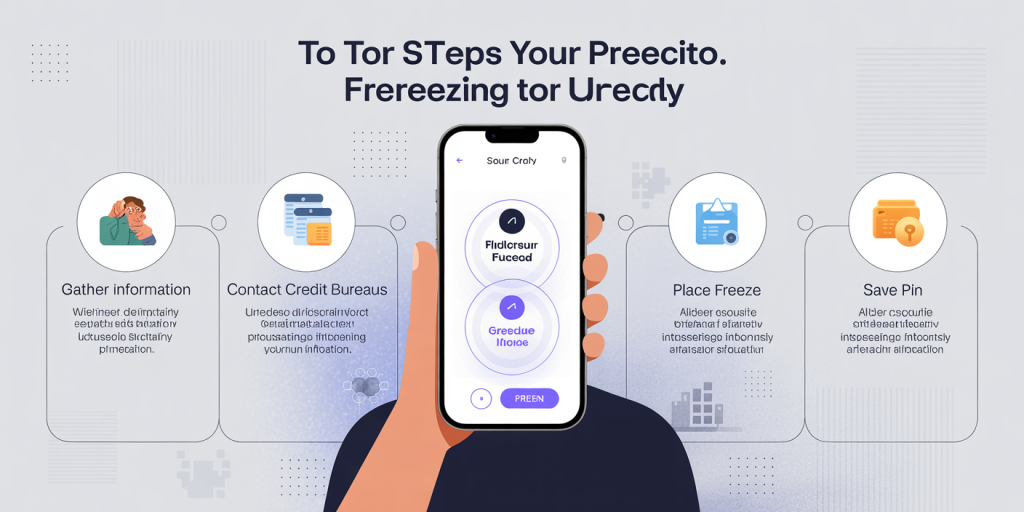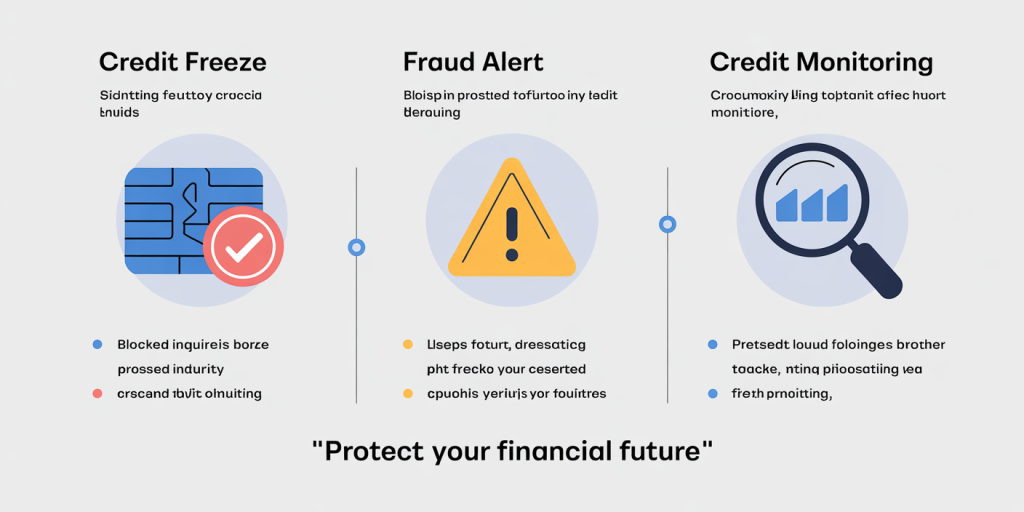How to Freeze Your Credit (and Why You Probably Should)
Anúncios
In today’s digital era, safeguarding your personal financial information has become more critical than ever. Identity theft and credit fraud are rising concerns, with millions affected annually worldwide. One effective security measure involves freezing your credit. But what exactly does freezing your credit mean, how can you do it, and why is it becoming a recommended action for consumers? This article explores the ins and outs of credit freezes, backed by data and real-world examples, to help you make an informed decision about your financial security.

Understanding Credit Freezes and Their Importance
Anúncios
A credit freeze is a tool that restricts access to your credit reports from major credit bureaus—Experian, Equifax, and TransUnion. When your credit is frozen, lenders or other entities cannot access your credit report, effectively stopping new credit accounts from being opened in your name without your permission. This action is vital because it acts as a barrier against identity thieves who attempt to use stolen information to open fraudulent credit lines.
To put it into perspective, the Federal Trade Commission (FTC) reported that identity theft was the most common type of fraud reported in the United States in 2022, with over 1.3 million reports involving credit card fraud or unauthorized credit accounts. Freezing your credit addresses this issue by preventing new credit inquiries, thereby significantly reducing the chance of fraudulent accounts being created under your identity.
Anúncios
Real cases illustrate this point clearly. In 2017, after a massive Equifax data breach exposed sensitive information of 147 million Americans, many victims saw a spike in fraudulent credit activity. Those who had proactively frozen their credit profiles saw less impact, since new credit attempts were blocked regardless of the breach.
Step-by-Step Guide on How to Freeze Your Credit
Freezing your credit is a straightforward process that can be completed online, by phone, or by mail. Below is a detailed step-by-step guide to help you navigate the process across the three major credit bureaus.

1. Gather Required Information
Before initiating a freeze, prepare essential information including your full name, Social Security number, date of birth, address, and any previous addresses. You may also need copies of government-issued identification such as a driver’s license or passport.
2. Contact Each Credit Bureau Separately
Unlike certain credit actions, a credit freeze is bureau-specific. You must place a freeze with Experian, Equifax, and TransUnion individually. Below are the contact details:
| Credit Bureau | Website | Phone Number | Freeze Lift Method |
|---|---|---|---|
| Equifax | www.equifax.com/freeze | 800-349-9960 | Online/Phone/Mail |
| Experian | www.experian.com/freeze | 888-397-3742 | Online/Phone/Mail |
| TransUnion | www.transunion.com/credit-freeze | 888-909-8872 | Online/Phone/Mail |
3. Place the Freeze
Once you provide the necessary information, the bureau will process your request. Typically, freezing your credit with each bureau is free and completed within minutes online, although phone or mail requests may take longer.
4. Save Your Freeze PIN or Password
After the freeze is in place, you will receive a PIN or password from each bureau. This is critical if you want to temporarily lift or permanently remove the freeze later, such as when applying for a loan or credit card.
Practical example: Jane Doe, after hearing about a local identity theft case, froze her credit at all three bureaus within a week. When she applied for a mortgage two months later, she temporarily lifted her freeze using her PINs, then quickly reinstated the freeze the same day—a process that safeguarded her credit profile without interrupting her home loan approval.
Benefits and Drawbacks of Freezing Your Credit
While freezing your credit offers significant protection, it’s important to understand both its advantages and potential downsides before taking action.
Advantages Prevent Fraudulent Credit Accounts: With a freeze, new credit applications using your personal data are automatically blocked, eliminating one of the most common fraud types. Free and Easy to Implement: All U.S. consumers can place, lift, or remove a credit freeze at no cost. Long-Term Security: The freeze remains in effect until you decide to lift it, making it a proactive defense mechanism against identity theft.
Drawbacks Inconvenience for Legitimate Credit Applications: Anytime you want to apply for credit, you’ll need to unfreeze your credit, which can add extra steps and delays. Does Not Affect Existing Accounts: A freeze only blocks new credit inquiries; it does not protect against fraud involving existing credit cards or loans. Limited to Credit-Based Fraud: Other forms of identity theft, like tax or medical identity theft, are not directly prevented by a credit freeze.
The following table summarizes these points:
| Aspect | Benefits | Drawbacks |
|---|---|---|
| Fraud Prevention | Blocks new credit accounts | Does not prevent misuse of existing accounts |
| Cost and Accessibility | Free and simple to set up | Requires individual requests per bureau |
| Inconvenience | Continuous protection until lifted | Temporary lift needed for credit applications |
| Scope of Protection | Effective for credit-related identity theft | No effect on other identity theft types |
Real-World Impact and Statistics on Credit Freezing
Data reveals an increasing trend in consumers opting to freeze their credit. According to the Consumer Financial Protection Bureau (CFPB), there was a 25% increase in credit freeze requests in the last five years. This growth correlates with rising public awareness fueled by major data breaches and identity fraud reports.
One notable case involved a customer of a major retail chain breached in 2020, where personal and credit data were compromised. Those customers who froze their credit profiles after the breach reported significantly fewer fraudulent attempts than those who had not. This validates the effectiveness of credit freezes as a preventative strategy.
Moreover, the FTC’s Identity Theft Report indicates that victims of credit fraud who took steps like freezing their credit saved an estimated average of $700 in lost funds and recovery costs compared to those who didn’t. This cost saving reflects reduced fraud claims, credit repair expenses, and less time spent resolving issues.
Alternative Credit Protection Measures Compared
While a credit freeze is powerful, it’s useful to compare it with other identity protection methods like credit monitoring or fraud alerts to understand which suits your situation best.
| Protection Method | Description | Cost | Protection Scope | Ease of Use |
|---|---|---|---|---|
| Credit Freeze | Blocks all new credit inquiries until lifted | Free | Prevents new credit fraud | Requires PIN-based management |
| Fraud Alert | Flags activity on your report for lenders | Free | Alerts lenders to verify identity | Automatically expires after 1 year, requires renewal |
| Credit Monitoring | Tracks credit report changes & alerts you | $10-$30/month | Detects and notifies suspicious activity | No direct prevention, reactive alert system |
For instance, credit monitoring services provide real-time alerts about changes in your credit file but don’t prevent new credit applications. Fraud alerts prompt lenders to verify your identity before issuing credit but do not block inquiries entirely. Combining these tools with a credit freeze can create comprehensive protection tailored to your needs.

Looking Ahead: The Future of Credit Freezing and Identity Protection
As digital financial services evolve, so do identity theft tactics. The future promises more sophisticated tools, but the fundamental role of credit freezes is likely to remain crucial. We may see integration of biometric authentication and AI-driven fraud detection that complements freezes by providing dynamic, real-time responses.
Furthermore, legislation is evolving. Some states now require credit bureaus to offer additional identity theft protection services linked to freezes. The Consumer Data Industry Association (CDIA) reports ongoing discussions about nationwide standards that would streamline freeze and unfreeze processes, making them faster and more secure.
Consumers should anticipate enhanced user experiences through mobile applications tied to credit freezing management and broader educational campaigns promoting proactive credit protection. As scams increase in complexity, freezing your credit could become a default recommendation for new adults managing personal finances and older adults vulnerable to scams.
Final Thoughts on Whether You Should Freeze Your Credit
Considering the increasing frequency of identity theft and data breaches, freezing your credit is a prudent step for most adults to protect their financial health. It is free, relatively straightforward, and offers robust protection against a common fraud type. However, it requires vigilance, especially when planning to apply for credit, since you must remember to unfreeze and refreeze your accounts.
Freezing your credit complements other strategies like using fraud alerts and credit monitoring, providing layered security. Real cases and statistics consistently show that consumers who freeze their credit experience fewer fraudulent attempts and incur lower financial losses.
In an age where your credit information is a valuable target, freezing your credit is a powerful control tool—one that can safeguard your financial future and offer peace of mind. Whether you’re an individual concerned about your current risk or someone wanting to build stronger defenses ahead of time, freezing your credit is an option worth serious consideration.



Post Comment